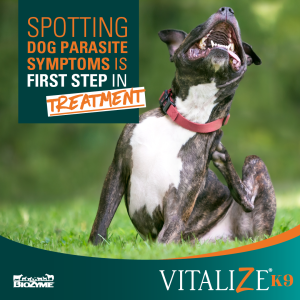
New Puppy
There is nothing quite as exciting as welcoming a new puppy to your home! Regardless of whether it’s your first-ever fur baby or an addition to your canine collection, each bundle of fluffy fur and paws can be so sweet. But it is important to remember they are babies, and they require a lot of care and attention in their new surroundings.
Meet the Swensons of Big Grove Farms
Experienced dog breeder Erika Swenson, Newark, Illinois, said bringing home a new puppy is exciting and stressful for both the puppy and the new owners. She and her husband, Seth, own Big Grove Farms and have been raising and selling Teddy Roosevelt Terriers for about 15 years.
They originally purchased the small, heavy muscled, thick-structured terriers for rodent control on their farm but quickly fell in love with the animals. Today, they raise the dogs for both their show and prey quality.
Since the inception of Big Grove Farms, they added two more breeds to their kennel – Bernese Mountain Dogs and Corgis. Today, they actively breed, raise and sell Teddy Roosevelt Terriers and Pembroke Welsh Corgis.
“The Bernese Mountain Dogs are the protectors; the Terriers work for us, keeping the rodents and things under control. Then we have the Corgis, which are just fun. We really enjoy them, and they are so popular. We’ve had cattle here, and they will work cattle too. They will hunt mice too, right along with the Terriers,” Erika said.
While the Swensons are experienced dog breeders, they have witnessed first-hand the excitement of customers picking up puppies to take to new homes numerous times. Erika shares her top tips to prepare for bringing a new canine companion home.
Preparing For a New Puppy
1. Do your Homework
A new puppy is exciting for everyone in the household, but there is a lot to know about bringing a new puppy home. Make sure you have researched the breed to know what to expect from your new pup. Is it a high-energy breed and will require a lot of exercise? Or does it prefer to curl up on the couch next to you? Every breed is different, and every animal is different, too.
Erika also advises talking to the breeder via phone or Facetime before picking up the puppy.
There are often a lot of details, but there is so much excitement on pickup day. Ask questions about the brand of food the puppy eats, its vaccination schedule and any other questions you might have about litter box training or sleep patterns. Most breeders will provide you with information at pickup, but it is good to have the pup’s preferred food on hand when you get it home.
Stock Up On Supplies
Finally, be sure to have all of your supplies when you get that puppy home. Those include:
- Crate with a soft baby blanket or soft toy
- Stainless steel food and water dishes that clip to the crate or are sturdy enough not to tip over
- Toys like antlers, hooves, bully sticks or heavy-duty chew toys
Erika advises against rawhide chews as they disrupt the digestive system when ingested.
“Invest in a good bowl that doesn’t tip over all the time those first couple of weeks. Nothing frustrates a family more than constantly picking up the food or picking up the water that got spilled. It is worth it to invest in the stainless-steel little buckets that clip onto the crates. Get the cutesy stuff later,” she said.
“Also, forego the dog beds until they are past the teething stage. Just use baby blankets because if they chew a hole, you’re not picking up stuffing from the beds.”
2. Form, Stick to Routine
Your new puppy’s schedule might resemble that of a baby: sleep, potty, eat, potty, repeat. That is normal.
“When you are bringing a brand-new puppy home, it is no different than bringing a brand-new human baby home. If your human baby is hungry at 8 o’clock and hungry again at 8:30, just feed it. The puppies are growing; they are nervous when they first come home. Just feed them when they want. I know that isn’t going to be ideal for potting training, but at the same time, they are 8-weeks old, and their bladders aren’t that big, so it is hard to start that potty training first thing out of the gate when you get home,” Erika said.
“For nerves alone and to keep things as similar as when they left our house, just think about it – they have never had to spend a day alone on earth. They have always either had their mother and their siblings or just their siblings to being all alone.”
Potty Training Requires Routine
She also emphasized that a routine is very important to potty training your new pup. Any time it wakes from a nap or eats or drinks, you need to take it outside to go potty, even if it was just a short while earlier. Also, if your puppy has been outside for 30 minutes and has not gone to the bathroom, put it back in its crate. Wait for five minutes and take it back out. Animals typically won’t go to the bathroom where they sleep.
In addition to a schedule that you keep, also keep the crate in the same place. Dogs appreciate continuity and will acclimate to their crate being in the same room as you had it from the beginning.
3. Train to the Crate
Speaking of the crate, continue to treat it as a safe space. Use it for sleeping, travel and containment when you are not in the house. Dogs are den animals and feel safe in closed-in dark areas. Erika suggests ways to help them sleep as puppies.
“Get a big stuffed animal, put it in the dryer to warm it up and put it in the crate at bedtime with the puppy to help mimic a sibling. Also, at bedtime, put a blanket over the crate to keep out light and noise,” she said.
The Swensons do litter box train their puppies, and if you find a breeder that litter box trains puppies, good for you! This serves as a safety net in the crate while the puppies are still very young and trying to learn to control their bladders. For example, if you are gone for three hours, but they can only hold it for two, at least they have their litter box in their crates.
A Litter Box Alternative
If your new pup is litter box trained, but that is not for you, you can still use it as a way to train your dog outside. Just put the litter box in the area in your yard where you want it to potty, and that is where it will go.
A litter box-trained dog that doesn’t have a box in its crate will usually sniff or scratch around the crate for a few minutes. This is your sign that it is ready to go outside and will buy you a little time before an accident.
Most importantly, Erika wants you to remember that crate training should never be a punishment. It should be a happy time, and the crate should be their safe zone. Making sure to keep the experience positive will make your puppy’s relationship with their crate positive.
4. Love and Advocate for your Pup
A new puppy can be a lot of work, with feeding, potty training, and making sure it doesn’t chew everything in sight. However, it really is true that a dog can be man, woman or child’s best friend.
Puppies grow into dogs, and they can become the most loyal companion known when properly cared for. Make sure you play with your puppy every day; most dogs love a ball or toy that they can retrieve. It is important to keep small items they could choke on out of their reach. Don’t tease them with their toys, as they will become territorial.
Keep Track of Shots & Appointments
Finally, Erika said puppies need shots at about 8-, 12- and 16-weeks old. You will need to check with your dog breeder to make sure they have received their first round of shots before you pick them up. If this is the case, you should not need to take pups to the vet for 3 to 4 weeks unless you suspect it is sick.
When you do take them to the vet, carry them in; don’t let them walk on the floor. Ask the vet or vet tech to wash their hands, disinfect the scale, wall next to the scale and table to keep from spreading any harmful germs to your new pup.
5. Help your New Puppy Settle in with Vitalize®
Imagine going from the familiar to a totally unfamiliar environment, with new sights, sounds and smells. It’s enough to make any tummy rumble. Digestive upset is not uncommon for young puppies that are freshly weaned or adjusting to their new homes.
That is why BioZyme® has created products to leave an undeniable impact on your canine companion. Check out these products that can specifically help with the post-weaning stress and immune response:
Dog Gel
Vitalize® Dog Gel is a prebiotic and nutrient-rich gel for dogs designed to give immediate support to the digestive and immune systems. It contains AO-Biotics® Amaferm®, a prebiotic research-proven to enhance digestibility and MOS, which helps normalize gut microflora and supports the immune system. This fast-acting product supports appetite and hydration.
Alimend K9
Vitalize® Alimend® K9 is a liquid product for dogs designed to support gastric health and GI tissue and which may relieve occasional gastric issues. It also contains Amaferm, and it also contains MHB3®, a patented high molecular weight hyaluronic acid that coats the stomach and supports GI tissue integrity. Additionally, it includes beta-glucans that support the gut and immune system.
Vitalize Trixsyn Canine
Vitalize® Trixsyn® Canine is a liquid product for dogs designed to support joint health using hyaluronic acid. It contains MHB3, a patented high molecular weight hyaluronic acid.
Although you are bringing home a puppy, it is never too early to start supporting hip and joint health and mobility. Puppies grow fast, and with Trixsyn with MHBE, you can prevent joint problems before they begin. Oral administration of MHB3® Hyaluronan assists in healthy bone formation and supports the maintenance of bone mineral density.
Learn More about Vitalize
There are more Vitalize products available for your puppy for both gut and joint health. Learn more about Vitalize and taking care of your puppy as it grows.
Want to purchase Vitalize for your new puppy? You can shop online. Or if you prefer to shop locally, you can find a retailer on our dealer locator.
Puppies are cute little creatures, but they are a lot of work, but the work is worth it for a loyal best friend. It is not too early to start doing your homework before you bring home a new puppy. It will be worth it to hear those squeals and see those smiles!

